My boyfriend turned 30 just last month, so I decided to theme all of his presents ‘Corgi’, because he’s obsessed with them. Did you know there is a memorial for Susan, The Queen’s first Corgi, at Sandringham House, which The Queen designed herself? I do. Did you know that Susan was the first Pembroke Corgi and is the ancestor of all the rest, just like the monarchy? I do. Because he’s obsessed.
Last year, for my birthday, he gave me an art set. I had made little use of it up until now, finding myself busy with other things. So this was almost a reciprocal gift.
I had recently watched a documentary movie called Tim’s Vermeer in which the inventor Tim Jenison has some fun recreating what he suspects is the method Vermeer used to make his paintings. Vermeer’s paintings are particularly noted for their accurate reproduction of optical effects, including subtle lighting changes and crisp bright highlights.
Tim started with a camera obscura – essentially a pinhole camera the size of a room, in which the painter sits – and rejected this idea because the image was too dark. He then moved on to realising that with image set vertically next to canvas horiztonally, a mirror at 45 degrees between image and canvas, equidistant, would give a reproduction of the image, upside down, which he could see effectively overlaid on the canvas. By looking down on the mirror above his canvas, he would see in the mirror the original, the mirror acting like a little window showing the original image through it. You have to try this – it’s fascinating.
Then, by painting on the part of the canvas that is in line visually with the mirror, or just next to it, you can see that you’re getting the painting right, both in colour and location. A gentle rocking backward and forward motion, or left to right, allows you to compare your painting with the image. The purists would obtain a first-surface mirror at this stage so there isn’t any aberration at the edge of the mirror, but I didn’t have one, and the mirror from a cheap compact worked just as well. That is the method I used. Tim finds that to get his scene to behave like an inverted image, he can use a concave mirror in place of the inverted image.
My amazing art set!
I was truly itching to go by this point, having waited for the microphone stand, which holds the mirror, to arrive. But setting up the mirror was far more difficult than I anticipated. I was forced to use a tape measure to get the distance equal between the mirror and the canvas, as any error would result in a parallax shift when I moved my head. The mirror also had to be at exactly 45 degrees, which was pretty tricky to establish at the same time as adjusting it up, down, twist forwards and back slightly to align the picture. I started with the microphone stand out behind me and coming in over my left shoulder, but I found this was knocking it too often and not as easily reproducible as the set up shown, where I could make use of right angles in the microphone stand to more easily get the 45 degree mirror angle.
Painting setup
I found an image of Corgis I liked and inverted it by computer. I then displayed it on my screen, as you can see below, and tried to set up the canvas and mirror so that the image overlaid on the canvas didn’t appear to move any more when I moved my head around to look at different parts of the image.
Already aching…
Once I had some painting in place, I could more readily align it, but I often knocked it out of place. It would take me less time each time to realign it, but that time started at about an hour! Once I had the black parts of the eyes and noses in place, it became far easier to see where it went and way more precise. It was more difficult to get used to the properties of oil paints, which I’ve not used for anything major before. A few YouTube searches gave me what I needed about how to get the colours you want.
Getting there
I have my canvas and extendable shelf white-tacked in place, by the way, because this eliminates one of the factors in aligning the images. It took me a while to realise that I could do this. And it took me a while to realise that moving the computer monitor was a good way of getting everything in a place that was comfortable to use. But I still got a very aching back from 25-30 hours of using the mirror! I had to sit up very straight and look down along the side of the mirror almost continually.
Nearly there!
Here is a later stage. At the bottom of that picture, you can see the white spirit I used to dilute my oil paints and clean my brushes. You definitely need the windows open and preferably a breeze when using this stuff – its great advantage is that it evaporates quickly, changing the properties of the oil paint to make it more amenable to your whims. This also means it fills the room with fumes pretty rapidly. I used about a third of a bottle in the process of this whole painting.
Done!
Here it is getting much closer to finished, and below the final painting! Phew! After 25-30 hours of staring at Corgis, a lot of things started to look furry…
623views
Share on Facebook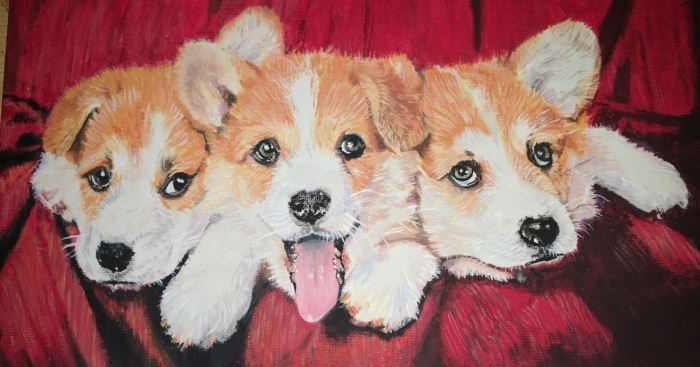
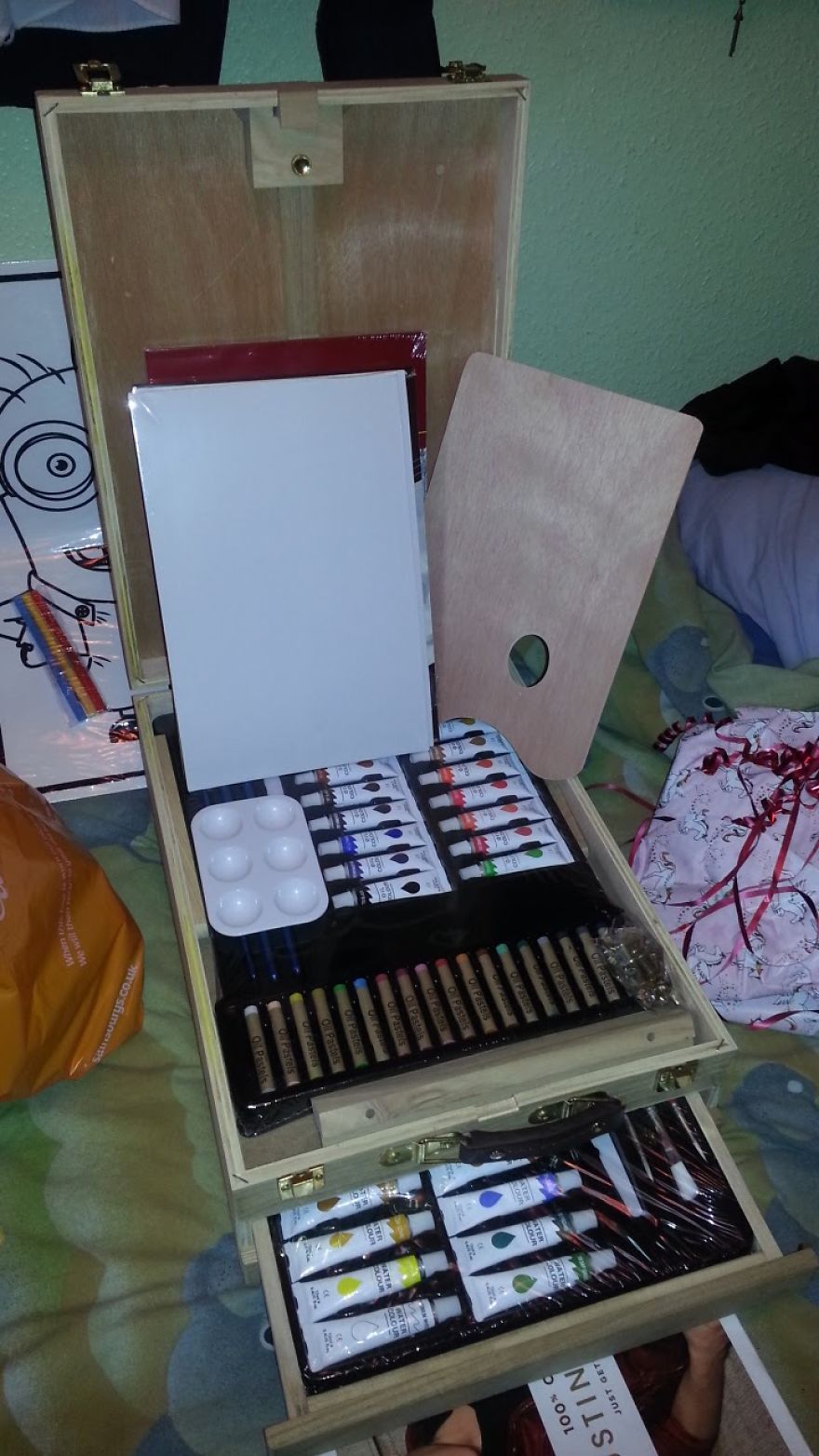
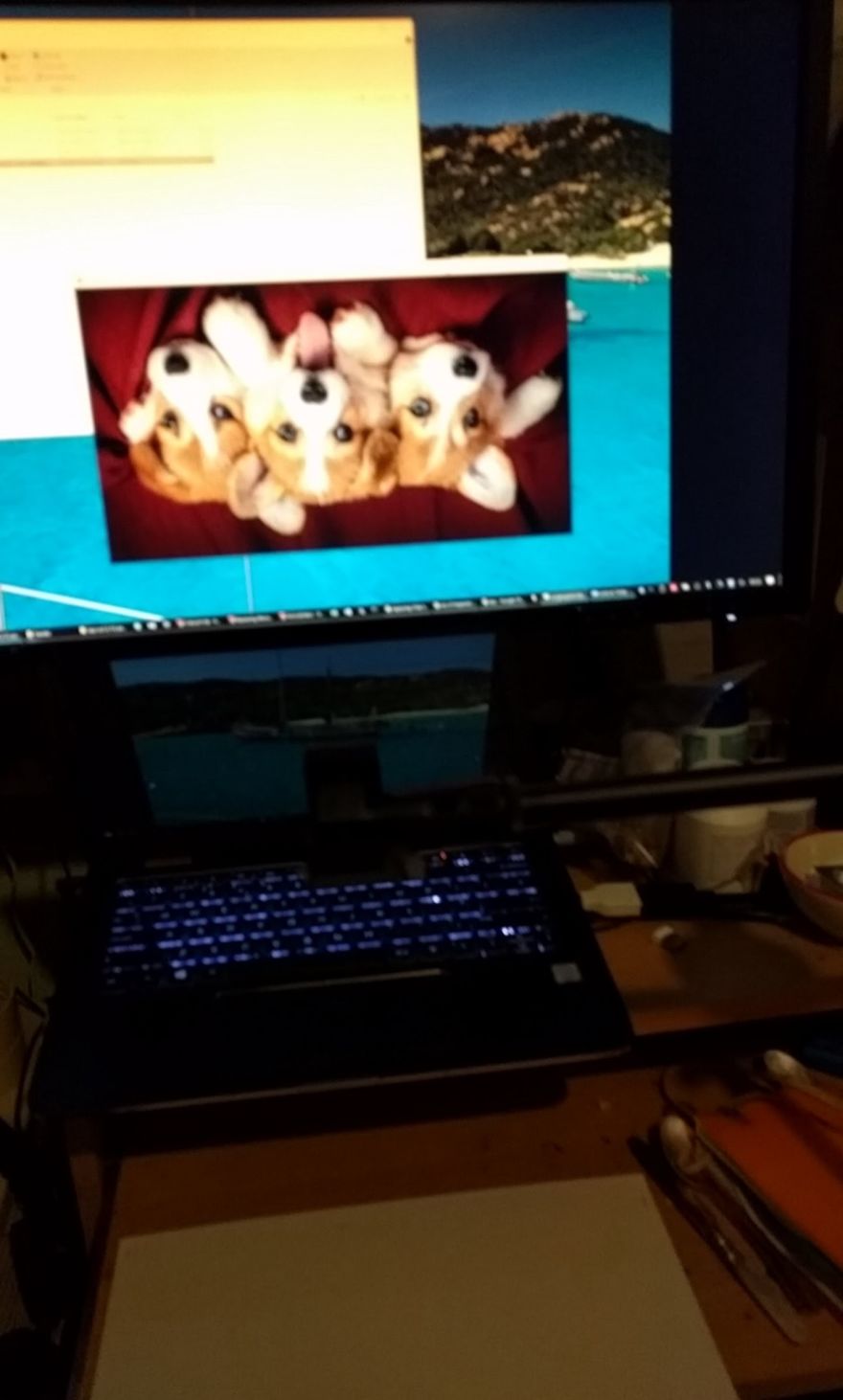
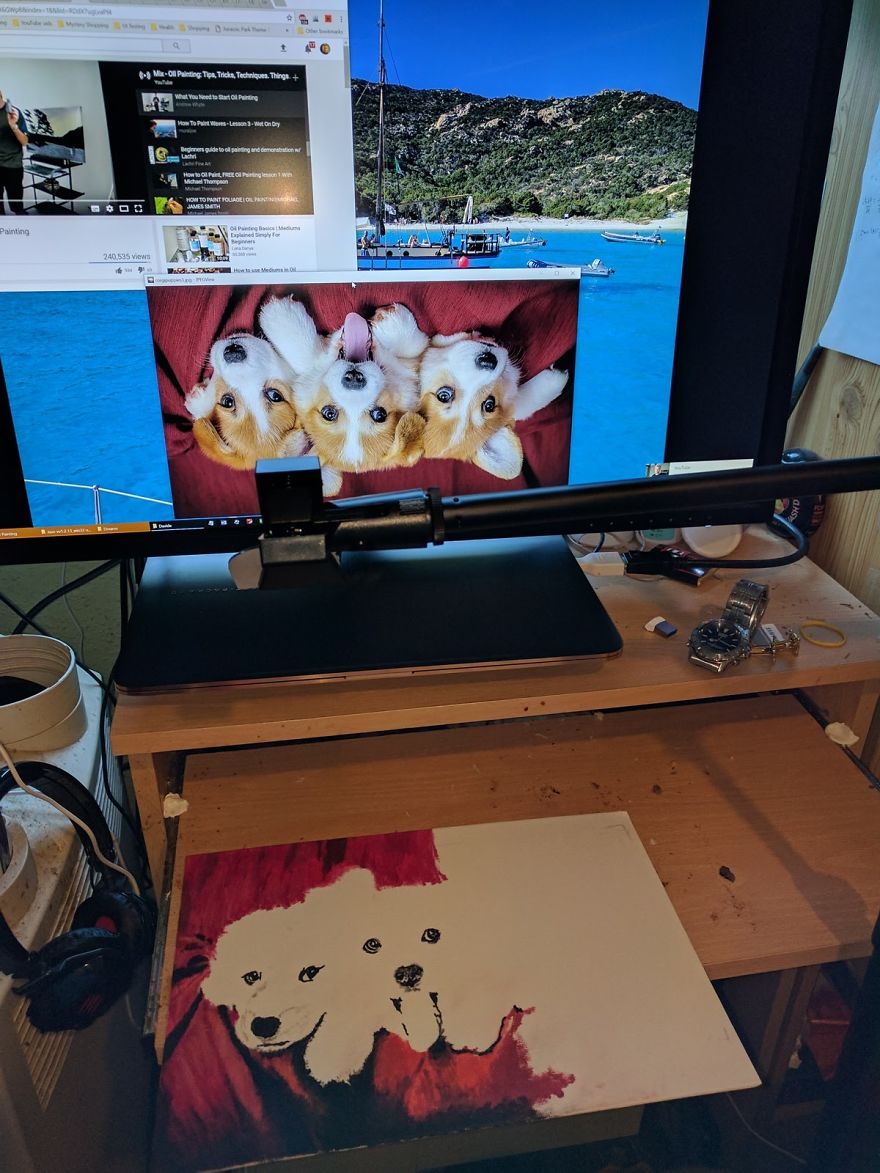
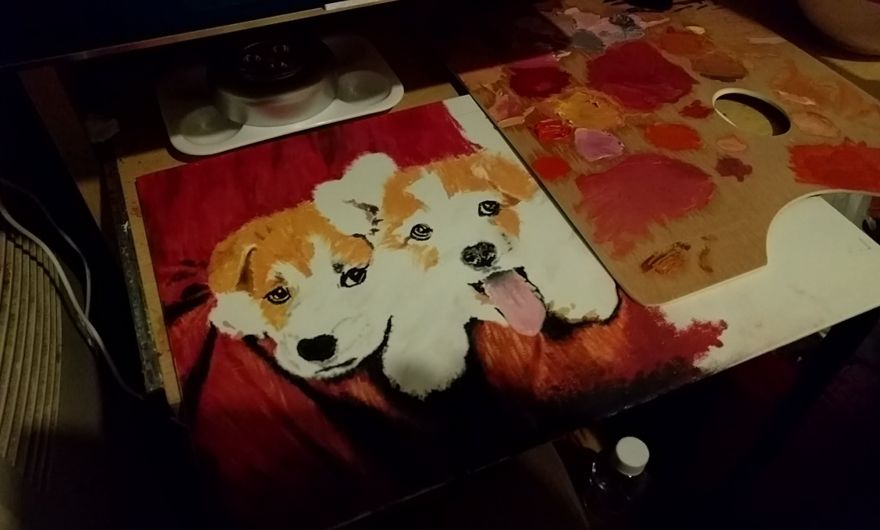
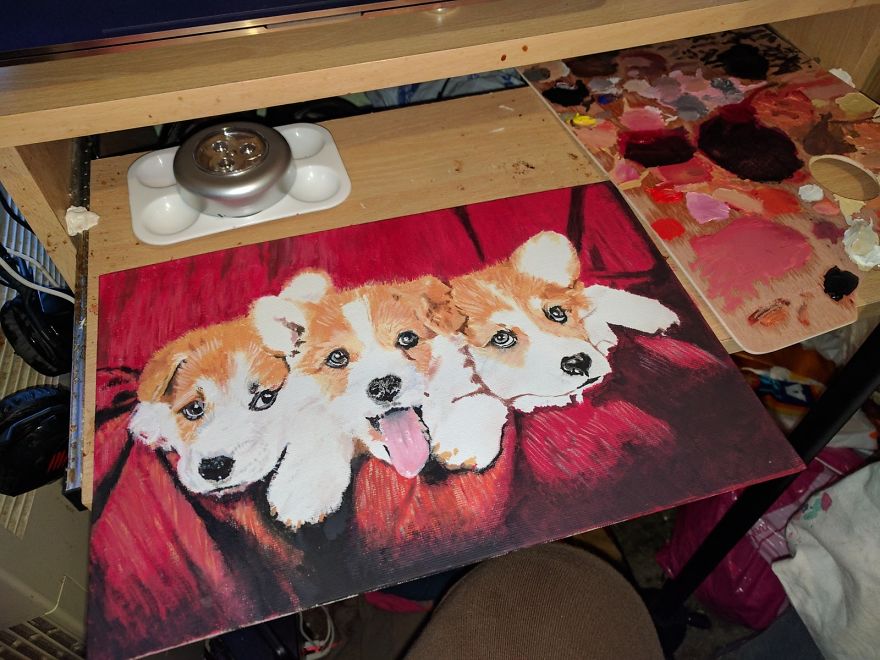
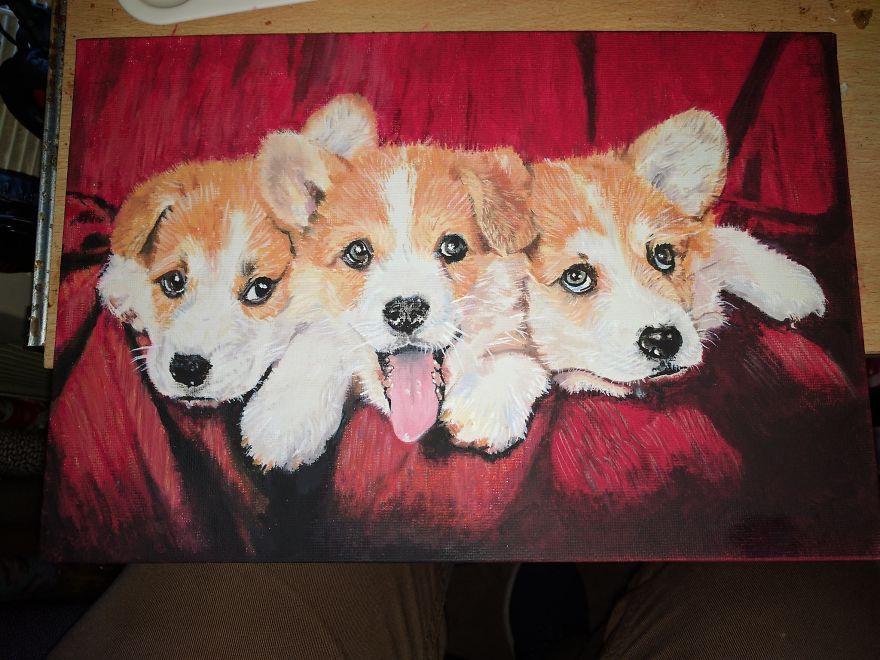
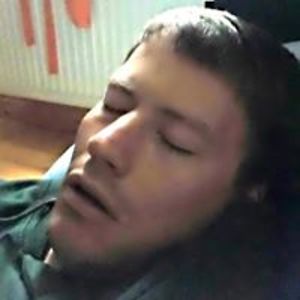


30
0